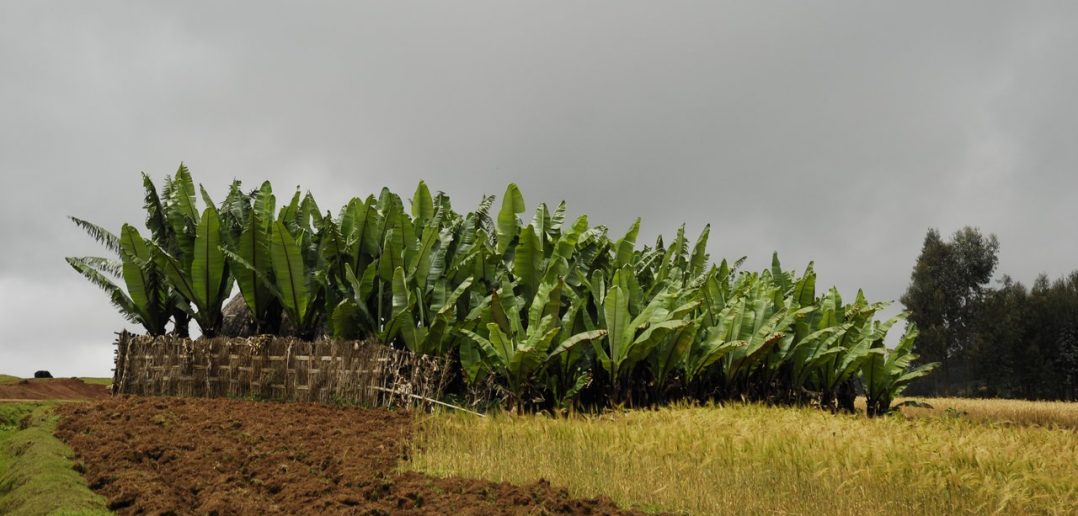Enset, also commonly referred to as the Ethiopian banana, the false banana or the banana on steroids, is forming the basis of a multi-centre partnership between scientists from the University of Leicester, the Royal Botanic Gardens, Kew, and the University of Addis Ababa, who are all hopeful about the potential of this crop to solve the growing issue of food security in African countries.
The project, which is entitled, ‘Modelling and genomics resources to enhance exploitation of the sustainable and diverse Ethiopian starch crop Enset,’ is still in its early stages, but will require two years of data collection, looking at the plants phenotypic and genotypic characteristics, to determine whether it is indeed as climate smart as scientists now believe.
Enset seems to be an ideal solution to the issue of food sustainability. It is incredibly resilient, not affected by droughts, floods or heavy rain, a trait that will become ever more important as global warming causes increasingly more unpredictable weather conditions, and it is highly space efficient, taking up less space per square metre than most cereals and therefore allowing far more people to be fed.
Its versatility, able to be used in bread, as a porridge and as a potato substitute, means that Enset forms the basis of many houses diets in Ethiopia. Indeed, the initial idea for the project came about due to a partnership between Ethiopia and Kew Gardens; the main collaborators in Ethiopia grew up on Sunday lunches of Enset porridge! But Enset is not only a food source, with different varieties being used for medicinal purposes or for making ropes, clothing and shelters.
Dr Paul Wilkin, project leader and Head of Natural Capital and Plant Health at the Royal Botanic Gardens, Kew, says, ‘It is widely known that just 3 crops – wheat, rice and maize, supply almost 60% of human nutrition. This is a risky strategy as we seek to provide for a growing global population with elevating levels of climatic instability and plant pests and diseases. Research on the diverse varieties of Enset…is urgently needed to see how it could help provide a sustainable, diverse diet for vulnerable populations.’
Dr Wilkin believes that Enset has the potential to ‘make a difference to people’s futures (and) improve people’s lives’ but in order to do so much more must be known about this species and its genetics. For example, currently it is not known how Enset is pollenated, which is crucial knowledge if its seeds are to be used to help enhance the crops distribution.
It is hoped that eventually Enset’s seeds can be stored in seed banks, providing a much more diverse, less expensive and safer way to produce this crop in bulk quantities. One potential method of pollination which is to be explored is by bats; using infra-red cameras, scientists will observe the plants overnight to see what species are visiting.
Although the plant could potentially be grown outside of Africa, with distribution mapping also being carried out to determine suitable climatic ranges, the project is more interested in spreading Enset’s distribution around African countries, where the three staple crops of wheat, rice and maize are taking over. Dr Paul Wiklin refers to Enset as Ethiopia’s ‘gift to the rest of Africa’ and it is hoped that, through this project, the full potential of this gift can be realised.
The project is one of 35 different research projects which together make up the Global Challenges Research Fund (GCRF) Foundation Awards for Global Agriculture and Food Systems Research, all of which are working to address the issue of sustainability in our food supply. Other projects include initiatives to look at pests and diseases, agricultural soil sustainability and human behaviour surrounding food safety and nutrition.
You can follow the project and its progress here.



